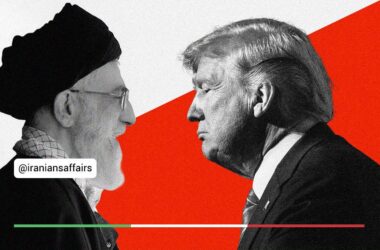After 10 days, Assad’s opponents entered Damascus, ending 54 years of Assad family rule. During this period, clear and precise information about the events in Syria was scarce. Ambiguities made predictions difficult. The role of politics in the armed groups’ advance was unclear. The involvement of regional countries and any prior dialogues or agreements remained unknown. However, with the victory of Syria’s united opposition groups over the Assad regime, several points can now be asserted without doubt.
The opposition groups advanced through villages, neighborhoods, and cities toward Damascus in a convoy of civilian vehicles without encountering resistance from Syria’s air force (or its allies), artillery fire, or serious military engagement. Limited airstrikes by Russian planes also did not target the convoy of armed groups, creating the impression that Syria’s skies were secured for their swift progress. Even clashes between Assad’s helicopters and opposition drones were minimal. The opposition, particularly Hay’at Tahrir al-Sham and its allies, received drone support and ample intelligence on the frontlines and troop deployments, signaling backing from global and regional powers.
The primary key to the opposition’s swift victory and the restoration of a unified Syria may lie in this apparent global consensus and alignment. Unlike the lack of U.S. resolve during the Obama era 14 years ago, when the Assad regime’s survival strategy relied on mass killings, this time, everything seemed prepared for the opposition’s success. Russian and Iranian interventions were limited. Turkey played a pivotal role as a primary actor and coordinator in the region’s emerging order. Saudi Arabia and other regional countries emphasized preserving Syria’s territorial integrity. The events began with a ceasefire between Israel and Hezbollah. Israel not only prevented Hezbollah forces from entering Syria through Lebanon to launch operations against the opposition but also issued stern warnings and took direct action. Meanwhile, Iraq stopped Iran-backed Popular Mobilization Forces (PMF) from entering Syria and thwarted their efforts through U.S.-aligned forces that captured Deir ez-Zor and advanced toward Al-Bukamal.
The path to victory was predetermined. The opposition forces advanced directly toward Damascus, avoiding military strongholds like Latakia and Tartus with a significant Russian presence. From the outset, the goal appeared to be uniting the opposition forces to reach Damascus. The strategy was clear, and so were the actions. In Aleppo, a prominent local figure was appointed to manage the city, avoiding purges or retaliatory measures.
The substantial weakening of Hezbollah and the regional dynamics following October 7 demonstrated their full impact in Assad’s downfall. Israel has convinced all parties that there is no military or intelligence balance in the region. With the decision to dismantle the “Axis of Resistance,” it became clear that the new Middle East order would no longer tolerate non-state armed groups. For the opposition groups, survival within this order was only possible by seizing state power and defeating Assad.
In Iraq, changes are also underway. Ayatollah Sistani has called for limiting weapons to the military. The PMF has had little room to maneuver under Prime Minister Sudani’s government.
Turkey emerges as the primary beneficiary in this scenario. Three million Syrian refugees are expected to return home, and the issue of militant Kurds will likely be addressed within the framework of a unified Syria. A pro-Turkey government will not only grant Turkey political and military leverage but also bolster its role in the post-October 7 Middle East. Turkey’s limited actions indicate its confidence in the process. Foreign Minister Hakan Fidan openly acknowledged Turkey’s support for the opposition while emphasizing the U.S.’s role in backing the movement.
So far, an agreement seems evident. No one desires Syria’s disintegration. Even the opposition, historically linked to Salafi-Jihadi Islamism, has over the years coalesced around the idea of a “Syrianization” process. They launched operations under the banner of Arab-Islamic nationalism, promoting unity in Idlib. Forces in eastern Syria, through broad coalitions backed by the U.S., had already distanced themselves from separatist agendas. The emerging government appears poised to align with a modern and national framework in the region.
Russia, meanwhile, has retained its presence in Tartus and Latakia, with changes there proceeding gradually and in line with regional and global agreements. Post-Ukraine, Russia’s global power has waned. Wars that drag on weaken major powers, and 21st-century Russia must now reconcile with being a regional power rather than a global one. The Mediterranean and the gateway to the Black Sea may eventually slip from its grasp, pushing Russia toward seeking equitable agreements with regional allies, potentially mediated through Turkey or other actors.
The opposition’s compromise with the current government may be the most significant insight into the unfolding events. Assad no longer has a place in Syria. Likely, secret negotiations and agreements regarding the region’s new order had been underway for months. The Syrian military and government appeared neutral in the conflict between Assad and his opposition. These developments were no coincidence. The transitional period will likely be managed by the current government, marking a model of simultaneous conflict and compromise. Most officials may soon lose their positions and find no role in the new Syrian government. However, their involvement during the transition underscores a grand agreement and the acceptance of a national plan to end Syria’s 14 years of turmoil.
The Islamic Republic will be expelled from Syria, though limited bilateral ties will likely persist. Sensitivities surrounding the Assad family will remain, and any potential presence of Assad in Tehran could complicate matters. Yet, beyond conventional political analysis, it seems the trajectory of the Middle East will be determined by the U.S.’s multilateral strategy. Israel and Saudi Arabia will be primary players, with Turkey playing a decisive role, at least in Syria. The new order is taking shape, already reaching Iraq’s borders, where readiness abounds. On the other side of those borders, the Islamic Republic faces tough decisions it has yet to make.
In Syria, however, the political process will shape the future. Armed forces will no longer hold a primary role. Their influence has ended. This political process will face challenges, but if the agreements and dialogues that led the opposition to Assad’s palace remain intact, there is hope that a Syrianization framework will underpin the establishment of a stable government. Transformed Arab-Islamic forces, accommodating Syria’s ethnic and cultural diversity, may coexist with neighbors and begin the reconstruction of war-torn Syria.







